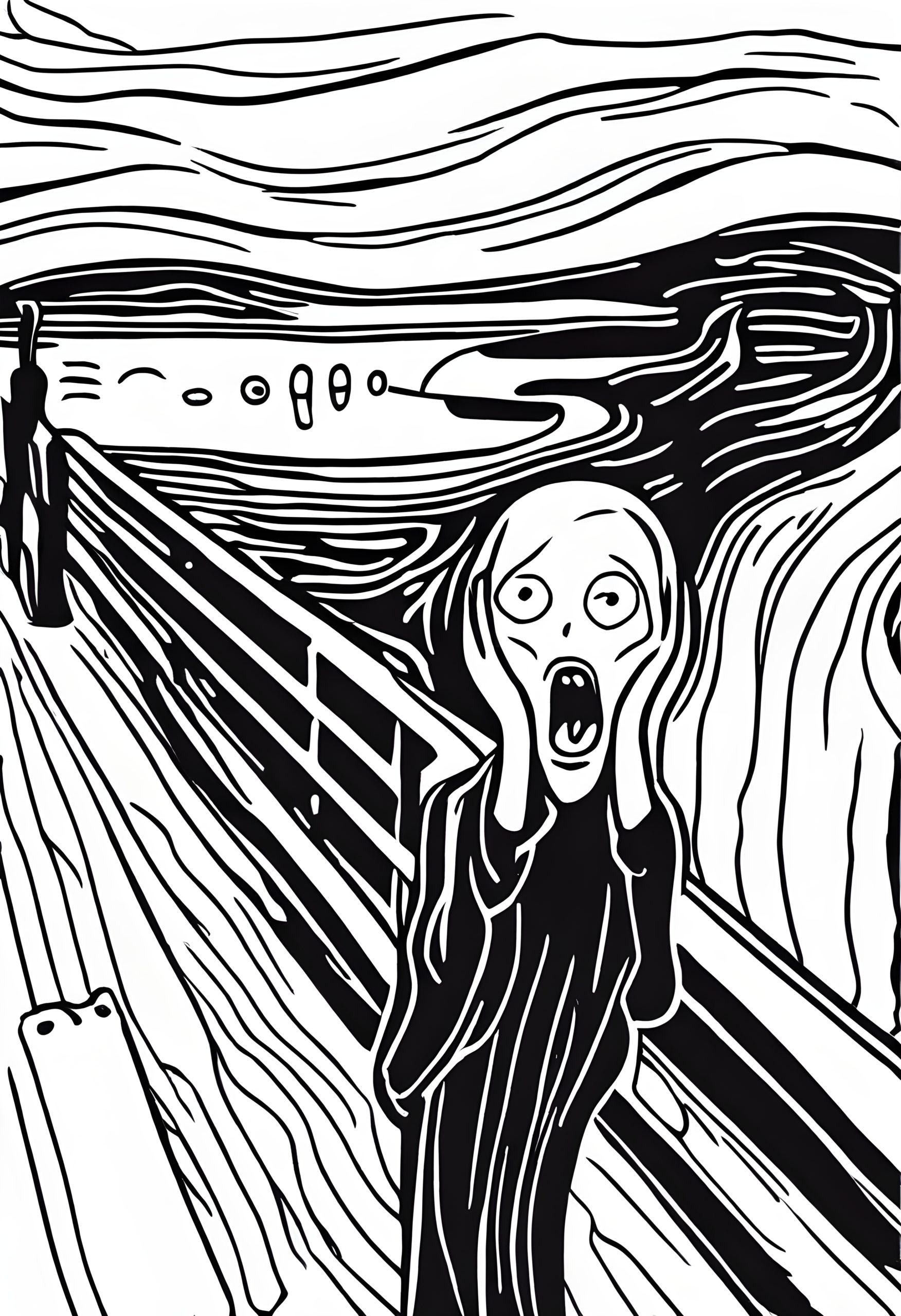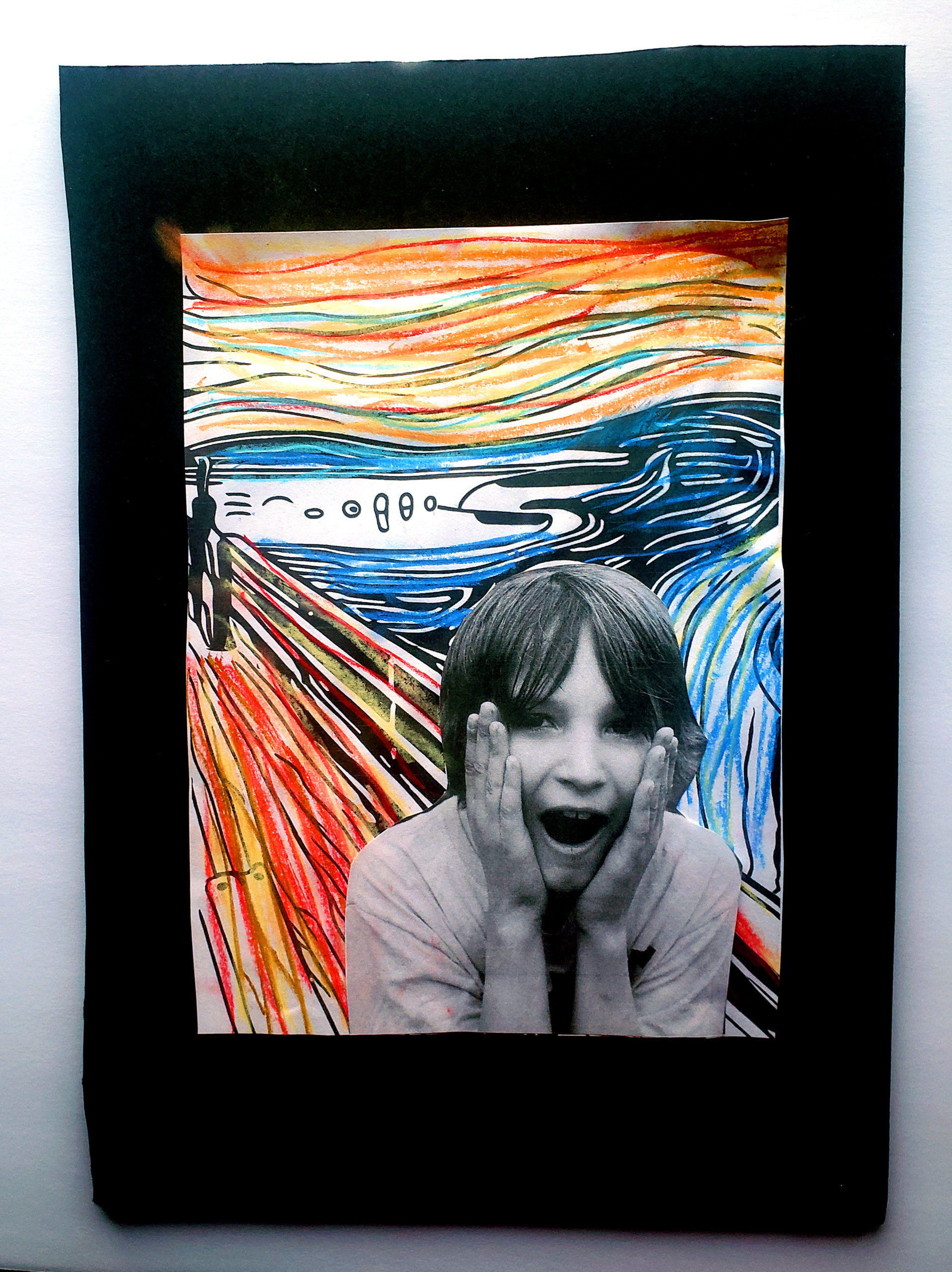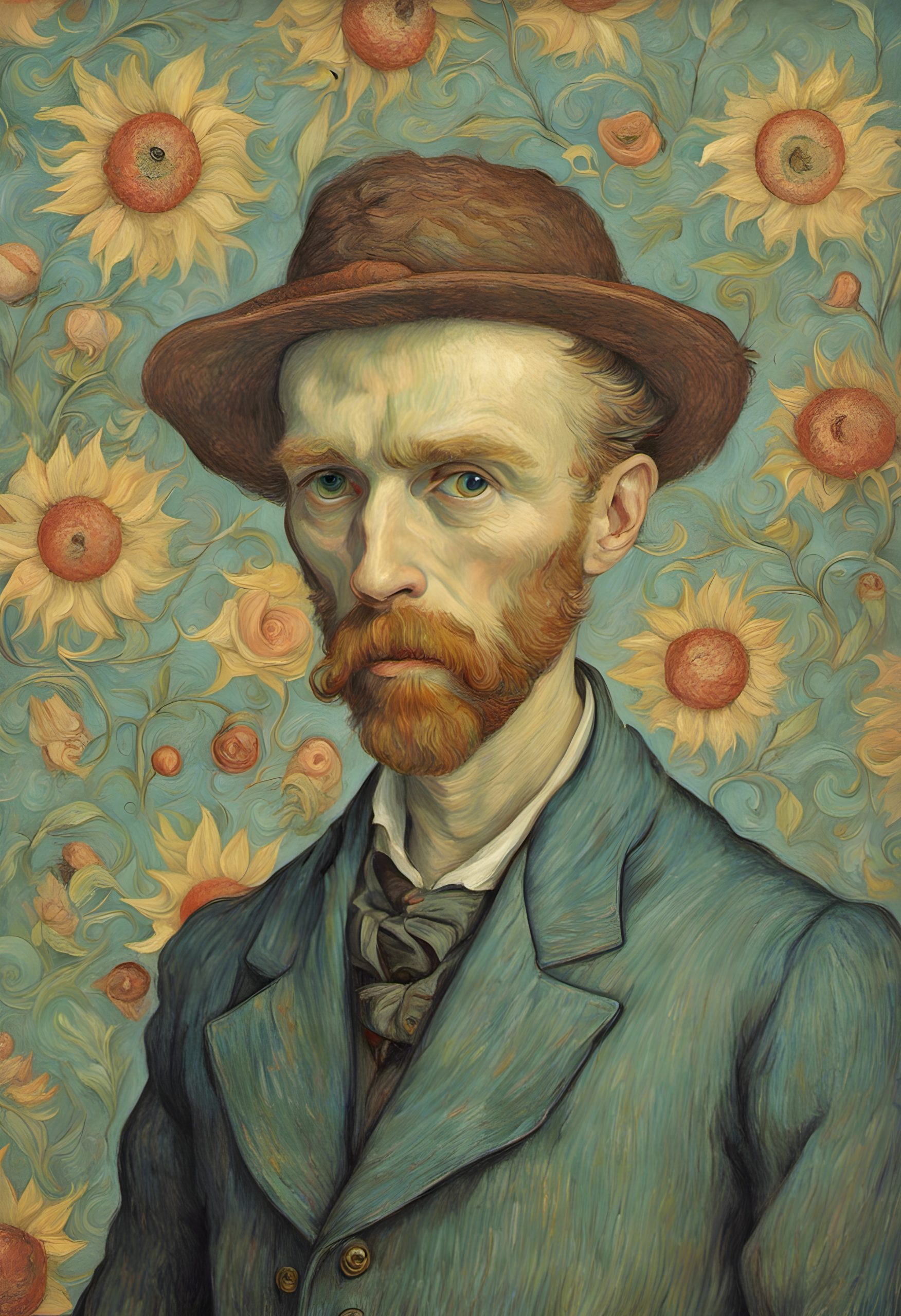A kid-friendly art history lesson on Edvard Munch with a fun, mixed-media project idea.
Who was Edvard Munch?
Edvard Munch was a famous Norwegian artist who lived from 1863 to 1944. He’s best known as a pioneer in the symbolist movement, and for his paintings that express deep emotions like fear, sadness, and love.
His work has touched the hearts of people all around the world.
Let’s take a closer look at his life, his art, and the techniques he used.
Early Life
Edvard Munch was born in a small town in Norway.
He was raised in a family of artists, so he started drawing and painting at a very young age. But his childhood wasn’t easy.
He lost his mother and his favorite sister when he was very young, and these painful experiences stayed with him throughout his life. These sad events greatly influenced his art.
Exploring Emotions
Munch believed that art should explore the deep feelings inside us. He wanted to show the world what it felt like to be alive, to love, to fear, and to suffer. He painted not just what he saw, but what he felt inside.
That’s why his paintings are so powerful—they speak directly to our hearts.
Famous Works
One of Munch’s most famous paintings (and the basis of our project today) is called “The Scream.” It shows a person on a bridge, their face contorted in terror, with swirling colors in the background. This painting captures the feeling of anxiety and fear that many people experience.
Another famous work is “The Madonna.” In this painting, a woman holds a child close to her, but her face is filled with sadness. These are just a couple of examples of Munch’s powerful art.
Techniques
Munch used several techniques to create such emotional paintings. One technique he used was called “distortion.” Instead of painting things exactly as they looked, he twisted and exaggerated them to show the intensity of his emotions.
Munch was an innovator in his approach to art, employing techniques that pushed the boundaries of traditional representation. He embraced distortion, exaggerating forms and perspectives to convey the emotional turmoil within.
His bold use of color and expressive brushwork added depth and intensity to his compositions, heightening the emotional impact of his work.
Legacy
Even though Munch faced many struggles in his life, he never stopped creating art. His work continues to inspire artists and art lovers today. Many museums around the world display his paintings, and people still study his techniques and ideas. Munch’s legacy reminds us that art is a powerful way to express our deepest emotions and connect with others.
Edvard Munch was a remarkable artist who dared to explore the depths of human emotion through his paintings. Through his expressive art, Munch invites us to look within ourselves and confront the emotions that make us human.
Key Vocabulary & Definitions
Background: In art, the background refers to the part of a composition that appears furthest from the viewer. It often provides context or setting for the main subjects of the artwork.
Composition: Composition in art refers to the arrangement of visual elements within a piece. This includes the placement of objects, colors, shapes, lines, and textures to create a harmonious and balanced whole.
Distortion: Distortion in art involves altering the proportions, shapes, or perspectives of objects to create a sense of exaggeration or abstraction. It is often used to convey emotional or psychological intensity.
Influence: In the context of art, influence means being inspired or affected by the work, experiences, ideas, or techniques of other artists or artistic movements. Artists may draw inspiration from various sources, incorporating elements of style or subject matter into their own work.
Perspective: Perspective in art refers to the technique of representing three-dimensional space and objects on a two-dimensional surface. It involves creating the illusion of depth and distance through the use of techniques such as foreshortening, overlapping, and vanishing points.
Symbolist Movement: The Symbolist movement in art emerged in the late 19th century as a reaction against naturalism and realism. Symbolist artists sought to convey abstract ideas, emotions, and spiritual truths through symbolic imagery rather than literal representation. Symbolism often involved the use of metaphorical or allegorical elements to evoke deeper meanings beyond the surface appearance of the artwork.
Edvard Munch Scream Project for Kids
Materials
*photos of children making “The Scream” face
*cartoon Scream printout (see below)
*crayons, markers, or oil pastels
*scissors
*glue
Step 1
Invite children to color “The Scream” coloring page.
Feel free to use mine! Just copy and paste it in a Word document (or whatever program you want to use) and print it out ahead of time.

Step 2
Have the kids cut out their photos and paste it over the scream face.
Optionally, we mounted them on black posterboard to give them a little weight.


